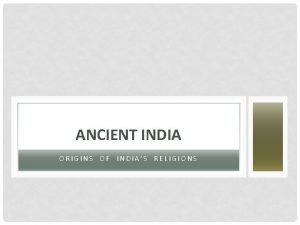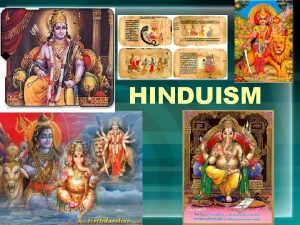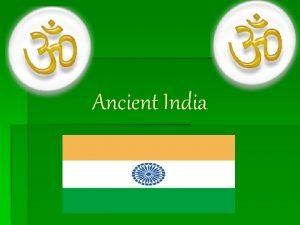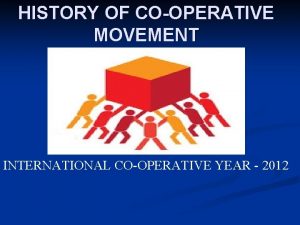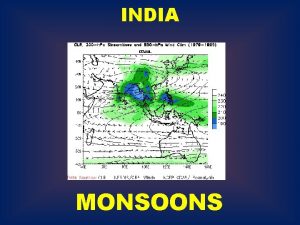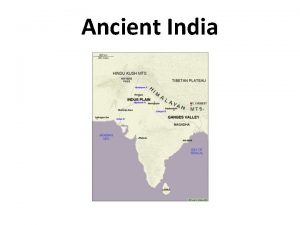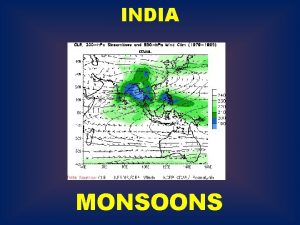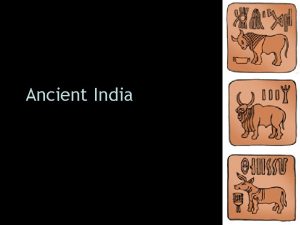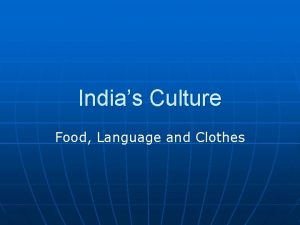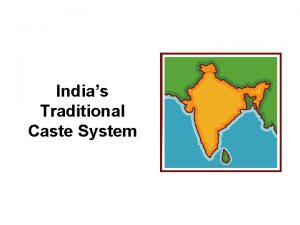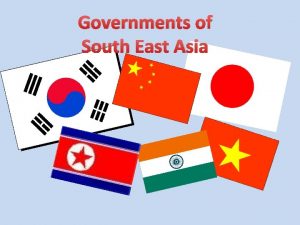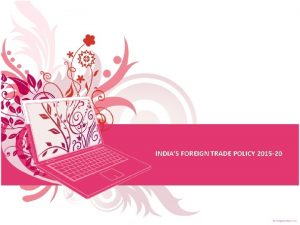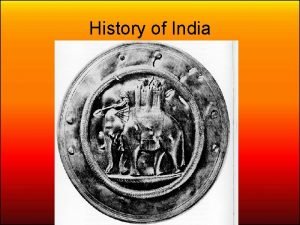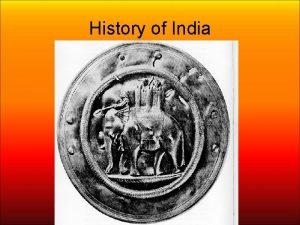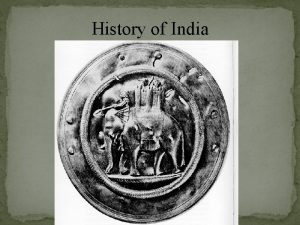Indias History India and the US have a
















- Slides: 16


India’s History • India and the US have a lot in common • India is the world’s largest democracy • In the past five years…

5 Dimensions • High Context • Collectivism • Take their time • Power is important • Place emphasis on surrounding context

Adapting Starbucks in India

Appearance and Dress Business Attire is Conservative & Neutral Colors Men • Blazers • Slacks • Close toed shoes Women • Skirt or dress to the knee • Close toed shoes (heels or flats)

Greeting • Hierarchical Culture • Eldest or Highest Rank Greeted First • Individual Goodbyes • Gender Roles in Hand Shakes

Body Language Rely on indirect communication Beware of non-confrontational behavior

Gift Giving • Box of Chocolates or Mithai (Indian sweets) • Books for business client’s children • It’s not the value of a gift…it’s the sincerity and importance

Meals and Dining Etiquette • Different regions, different foods, different eating patterns. • Lunch is most important in North, East, and West regions. • South makes breakfast being the main meal. • Indians always eat with right hand or a utensil • Typically eat four meals per day, but varies by income, location, and schedule of family members.

Typical Business Day • Indians typically work for 8. 1 hours daily. Five hours paid, three hours unpaid. • Family-owned businesses employ 75% of the citizens of India. • India tends to rely on relationships and are generally less explicit than U. S. • Process of ethical decision-making is much more difficult in India. • India and U. S. are very similar in business expectations; laws as well as privacy.

Decision Making Traditions • It all begins with trust • Politeness • Disagreement • Refusal • Avoid Confrontation • Proper introductions • Demonstrating Respect & Modesty (Dress & Demeanor) • Conveying Appreciation for Your Host

Gender Roles • Strong Sense of “Masculinity” • Women have difficulty being accepted in Indian Organizations • Steady Rise of Gender Equality • Women Entrepreneurs are catalysts for India’s economic growth • Male Family members have significant input • They influence management of women-owned businesses

Attitude towards Authority Legacy of Hierarchy in India All authority lies with the boss Not found in U. S. businesses

Attitude towards Conflict Resolution • The U. S. is a low-context culture • India is a high-context culture • Opinions are left unsaid • Effect on Ethical Decision Making • Focus on Body Language in Negotiations

Remember… Be Courteous Be Respectful Be Kind 3 Helpful Tips for Working In India : //www. youtube. com/watch? v=08 rb. Pog. Hvj. E&feature=you

Work Cited Bagchi, Amiya. "Indian Business History. " Indian Historical Review, 39. 1 (2012): 73 -91 Christie, P. M. , et al. "A Cross-Cultural Comparison of Ethical Attitudes of Business Managers: India, Korea and the United States. " Journal of Business Ethics 46. 3 (2003): 263 -87. Pro. Quest. Web. 29 Oct. 2015. Craig, Kern. "What Do the United States and India Have in Common (Besides Indians): Enough for a Strategic Alliance? . ” Asian Social Science, 9. 2 (2013): . Gautam, Ray. "Doing Business in India: Opportunities and Challenges. " Marketing Development and Competitiveness (2011): 7799. CSUN. Web. 28 Oct. 2015. "India - Language, Culture, Customs and Etiquette. " India. Kwintessential, n. d. Web. 29 Oct. 2015. Lefebvre, Rebecca. "India US Business Ethics. " Journal of Emerging Knowledge on Emerging Markets Volume 3 (2011): 2, 3, 4. Cross-Cultural Comparison of Business Ethics in the U. S. and India: A Study of Business Codes of Conduct. Web. 29 Oct. 2015. Meiselman, Ed Herbert. "The Indian Meal. " The Indian Meal. Woodhead Publishing, 13 Mar. 2009. Web. 28 Oct. 2015. Prasad, V. K. , et al. "Women Entrepreneurs and Business Venture Growth: An Examination of the Influence of Human and Social Capital Resources in an Indian Context. " Journal of Small Business and Entrepreneurship 26. 4 (2013): 341 -64. Pro. Quest. Web. 29 Oct. 2015 Sivers, Derek, and Mohit Pawar. “India 2014: New Information and Cultural Insights Entrepreneurs Need to Start a
 Indias religions
Indias religions Indias religions
Indias religions Indias major religion
Indias major religion Indias first empire
Indias first empire Indias first civilization
Indias first civilization Flota de indias ruta
Flota de indias ruta Caste system in india
Caste system in india Virreinatos capitanias y audiencias
Virreinatos capitanias y audiencias The maurya and gupta empires
The maurya and gupta empires 6 square faces and 8 vertices
6 square faces and 8 vertices British raj definition ap world history
British raj definition ap world history India imf loan history
India imf loan history Historical perspective of midwifery ppt
Historical perspective of midwifery ppt Definition of micro teaching
Definition of micro teaching Objective of pharmaceutical jurisprudence
Objective of pharmaceutical jurisprudence Evolution of banking in india
Evolution of banking in india Karve committee on cooperative principles
Karve committee on cooperative principles
